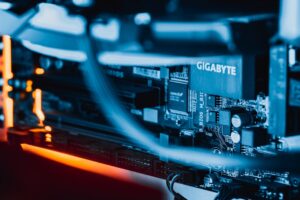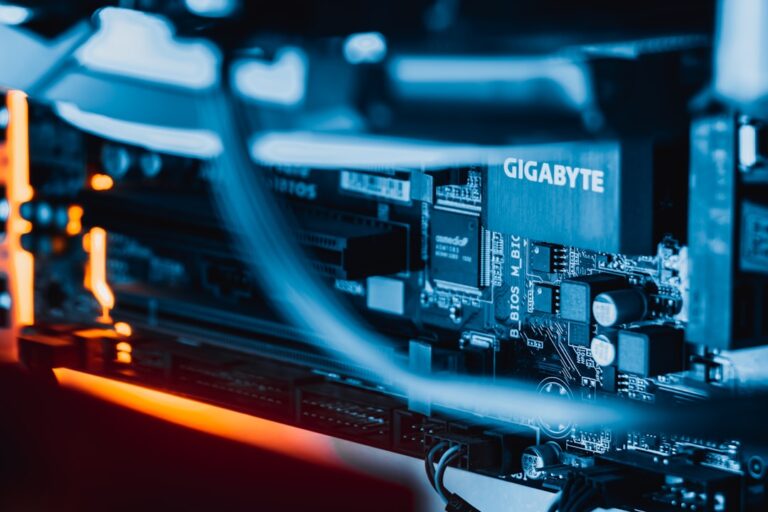Digital twin technology represents a revolutionary approach to the integration of physical and digital worlds. At its core, a digital twin is a virtual representation of a physical object or system, created using real-time data and advanced modeling techniques. This technology allows for the simulation, analysis, and optimization of physical assets throughout their lifecycle.
The concept originated in the manufacturing sector but has since expanded into various industries, including healthcare, automotive, aerospace, and smart cities. By leveraging the Internet of Things (IoT), artificial intelligence (AI), and big data analytics, digital twins provide a dynamic and interactive model that reflects the current state of their physical counterparts. The creation of a digital twin involves several key components: sensors that collect data from the physical object, a data processing layer that analyzes this information, and a visualization interface that allows users to interact with the digital model.
For instance, in a manufacturing environment, sensors embedded in machinery can monitor performance metrics such as temperature, vibration, and operational speed. This data is transmitted to a digital twin model, which can then be used to predict maintenance needs, optimize production processes, and enhance overall efficiency. The ability to visualize complex systems in real-time enables organizations to make informed decisions based on accurate and timely information.
Key Takeaways
- Digital twin technology creates a virtual replica of physical assets, processes, or systems to monitor, analyze, and optimize their performance.
- Digital twin technology is applied in various industries such as manufacturing, healthcare, transportation, and smart cities to improve operational efficiency, predictive maintenance, and product development.
- Implementing digital twin technology can lead to benefits such as reduced downtime, improved decision-making, enhanced product quality, and cost savings.
- Challenges and limitations of digital twin technology include data security and privacy concerns, interoperability issues, and the need for skilled personnel to manage and interpret the data.
- Best practices for implementing digital twin technology include defining clear objectives, integrating with existing systems, ensuring data accuracy, and continuously updating the digital twin to reflect real-world changes.
Applications of Digital Twin Technology
Digital twin technology has found applications across a wide array of sectors, each leveraging its capabilities to enhance operational efficiency and innovation. In the manufacturing industry, digital twins are used to create virtual replicas of production lines. This allows manufacturers to simulate different scenarios, such as changes in production volume or equipment failure, without disrupting actual operations.
This proactive approach not only reduces downtime but also extends the lifespan of critical assets. In the realm of urban planning and smart cities, digital twins are employed to model entire city infrastructures.
These models facilitate better urban planning by allowing city officials to visualize the impact of new developments or policy changes on traffic flow and resource allocation. Additionally, during emergencies such as natural disasters, digital twins can simulate evacuation routes and resource distribution, ultimately enhancing public safety.
Benefits of Implementing Digital Twin Technology

The implementation of digital twin technology offers numerous benefits that can significantly enhance organizational performance. One of the primary advantages is improved predictive maintenance capabilities. By continuously monitoring the condition of physical assets through their digital counterparts, organizations can identify potential issues before they escalate into costly failures.
This shift from reactive to proactive maintenance not only minimizes downtime but also optimizes maintenance schedules, leading to more efficient use of resources. Another significant benefit is enhanced product development and innovation. Digital twins allow companies to test new designs and configurations in a virtual environment before committing to physical prototypes.
This capability accelerates the design process and reduces costs associated with material waste and rework. For instance, automotive manufacturers can use digital twins to simulate vehicle performance under various conditions, enabling them to refine designs based on real-world data without the need for extensive physical testing. This iterative process fosters innovation by allowing teams to explore multiple design options quickly.
Challenges and Limitations of Digital Twin Technology
| Challenges and Limitations of Digital Twin Technology |
|---|
| Lack of standardization in data formats and communication protocols |
| Complexity in integrating multiple systems and data sources |
| Security and privacy concerns related to sensitive data |
| High initial investment and ongoing maintenance costs |
| Difficulty in capturing and representing real-time data accurately |
| Challenges in ensuring interoperability with existing infrastructure |
Despite its many advantages, the adoption of digital twin technology is not without challenges. One major hurdle is the integration of disparate data sources. For a digital twin to be effective, it requires access to high-quality data from various systems and sensors.
However, many organizations struggle with data silos and inconsistent data formats, which can hinder the creation of accurate digital models. Ensuring seamless data integration often necessitates significant investment in infrastructure and technology. Another limitation is the complexity involved in developing and maintaining digital twins.
Creating a comprehensive digital twin requires expertise in various fields, including data science, engineering, and software development. Organizations may face difficulties in finding skilled personnel who can effectively manage these complex systems. Additionally, as physical assets evolve over time—through upgrades or changes in operational parameters—keeping the digital twin updated can be resource-intensive.
This ongoing maintenance demands a commitment to continuous improvement and investment in technology.
Best Practices for Implementing Digital Twin Technology
To successfully implement digital twin technology, organizations should adhere to several best practices that can enhance their chances of success. First and foremost is establishing clear objectives for what they aim to achieve with their digital twin initiatives. Whether it’s improving operational efficiency, enhancing product development, or optimizing maintenance schedules, having well-defined goals will guide the implementation process and help measure success.
Another critical practice is investing in robust data management strategies. Organizations should prioritize the collection of high-quality data from reliable sources while ensuring that data integration processes are streamlined. This may involve adopting standardized protocols for data collection and storage or utilizing advanced analytics tools that can handle large volumes of data efficiently.
Furthermore, fostering collaboration between different departments—such as IT, engineering, and operations—can facilitate knowledge sharing and ensure that all stakeholders are aligned on the objectives of the digital twin initiative.
Future Trends in Digital Twin Technology

As technology continues to evolve, several trends are emerging that will shape the future of digital twin technology. One notable trend is the increasing integration of artificial intelligence and machine learning algorithms into digital twin systems. These advanced technologies can enhance predictive analytics capabilities by enabling digital twins to learn from historical data patterns and make more accurate forecasts about future performance or potential failures.
Another trend is the growing emphasis on sustainability within digital twin applications. As organizations strive to reduce their environmental impact, digital twins can play a crucial role in optimizing resource usage and minimizing waste. For instance, in energy management, digital twins can simulate energy consumption patterns in buildings or industrial processes, allowing organizations to identify opportunities for energy savings and implement more sustainable practices.
Case Studies of Successful Digital Twin Implementations
Several organizations have successfully implemented digital twin technology, showcasing its transformative potential across various industries. One prominent example is Siemens’ use of digital twins in its manufacturing processes. The company has developed a comprehensive digital twin framework that allows it to simulate entire production lines before physical implementation.
This approach has led to significant reductions in time-to-market for new products while also improving overall production efficiency. In the healthcare sector, Philips has leveraged digital twin technology to enhance patient care through personalized medicine. By creating digital twins of patients based on their medical history and real-time health data, healthcare providers can tailor treatment plans that are more effective for individual patients.
This innovative approach not only improves patient outcomes but also optimizes resource allocation within healthcare facilities.
Considerations for Choosing a Digital Twin Platform
When selecting a digital twin platform, organizations must consider several key factors to ensure they choose a solution that aligns with their specific needs and objectives. One critical consideration is scalability; organizations should look for platforms that can grow with their needs as they expand their use of digital twins across different assets or processes. A scalable platform will allow for the integration of additional data sources and functionalities without requiring a complete overhaul.
Another important factor is interoperability with existing systems. The chosen platform should seamlessly integrate with current IT infrastructure and software applications to facilitate smooth data exchange and collaboration across departments. Additionally, organizations should evaluate the level of support and training provided by the platform vendor; robust support can significantly ease the implementation process and help teams maximize the value derived from their digital twin initiatives.
In conclusion, as organizations increasingly recognize the value of digital twin technology across various sectors, understanding its intricacies—from foundational concepts to practical applications—becomes essential for harnessing its full potential. The journey toward successful implementation involves navigating challenges while adhering to best practices that foster innovation and efficiency in an ever-evolving technological landscape.
Digital Twin technology is revolutionizing industries by creating virtual replicas of physical systems, allowing for enhanced monitoring, simulation, and optimization. This concept is not only transforming engineering and manufacturing but also has implications in various fields, including sociology and cultural studies. For instance, the article on basic concepts of sociology explores how digital advancements influence social change and cultural dynamics. By understanding these interactions, we can better appreciate the broader impact of Digital Twin technology on society and its potential to drive significant social transformations.





















+ There are no comments
Add yours